CAS committee member Catherine Mason MBCS shares the history of the society and the contributions of the specialist group’s co-founder and President Emeritus George Mallen upon the release of her new book Creative Simulations: George Mallen and the Early Computer Arts Society.
Can you name the first digitally driven, multi-player, interactive gaming system in the UK? Surprisingly, it dates back to 1970. Led by George Mallen, this was the Ecogame, collaboratively conceived, designed and built by members of the Computer Arts Society (CAS), a Special Interest Group of the BCS since 1968.
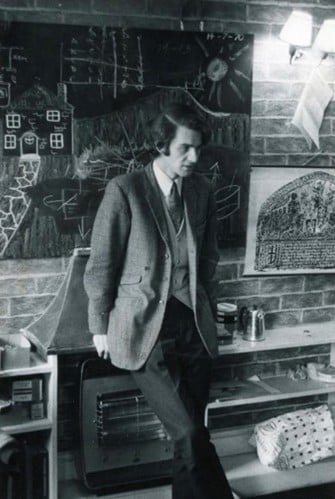
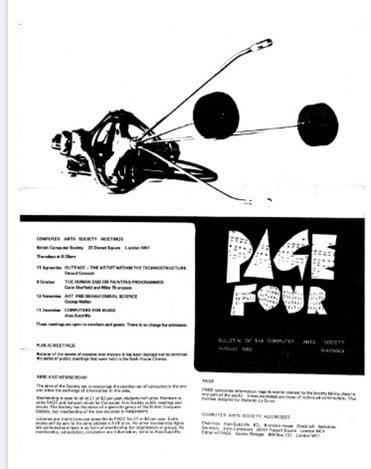
Dr George Mallen, FBCS (b. 1939) has been a pioneer of early computer simulation systems from 1962 and one of the original founders of CAS, along with BCS members Alan Sutcliffe and John Lansdown. Mallen is now the President Emeritus. The company Mallen founded in the 1970s, System Simulation Ltd, is one of the longest running software companies in the UK.
Mallen’s Ecogame
Ecogame was an interactive multimedia computer-controlled simulation that modelled an economic system. As its name suggests, it referred to ecology as well as economics, and how both could impact human decision making. The effects of decisions made by players were shown pictorially on screens displayed overhead, from a bank of 720 35mm slides. These varied depending on the general level of affluence in the economic model under the control of the players and the relevant prosperity or effectiveness of the individual players.
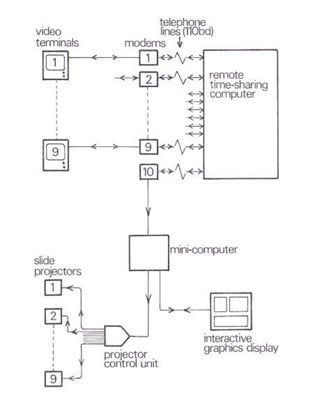
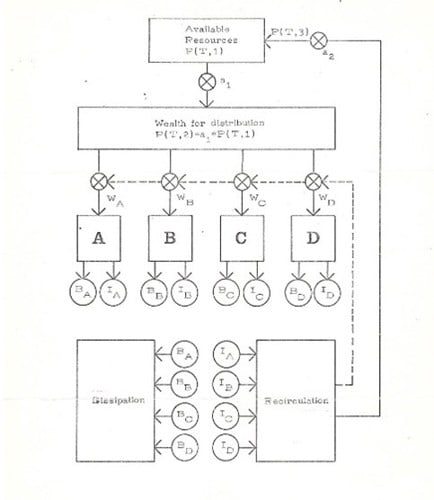
The technical set up used nine Tektronix graphics terminals — the first such terminals in Europe with tracker ball interaction. These were attached to computer-controlled slide projectors, controlled by an interface from Electrosonic, and acoustic couplers that linked the terminals to a remote time-sharing computer. An Idiom minicomputer-driven interactive graphics system with a large screen and light pen interaction was also linked to the remote mainframe using an acoustic coupler. This was technology that had never been put together in such a way before — a live interaction over a network was a very impressive feat for 1970.
The impact of Ecogame
The game was played by 5,000 people when it was first exhibited at the Computer ’70 exhibition and trade show held at London Olympia in October 1970. The following year it travelled to the first World Economic Forum in Davos, Switzerland.

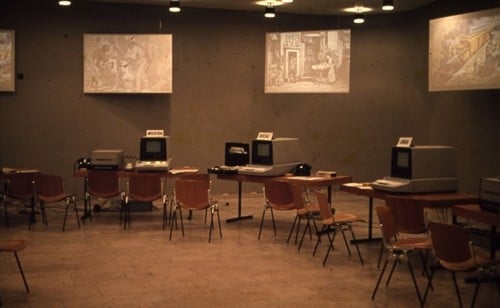
Ecogame even caught the eye of Stafford Beer, a British pioneer in operational research and cybernetics, who utilised some of its ideas and technology in his Project Cybersyn proposal in 1971-1973. Cybersyn (never realised) was a decision room for industrial planning using computers and a telex-based communications network, developed for Salvador Allende’s government in Chile.
For you
Be part of something bigger, join BCS, The Chartered Institute for IT.
Although little-known today, Ecogame remains a brilliant example of an early digital artwork that by its interactive, multi-disciplinary nature was able to cross audience boundaries, appealing to artists, trade show delegates, engineers, businesspeople, politicians and lay people alike.
The goal of the CAS
When it was founded, the CAS considered how computer technology could be harnessed — in Mallen’s words — ‘to assist, to inspire and to improve’ the creative processes of artists. The group was named using ‘arts’ in the plural, to include all genres where computers could play a role: architecture, sculpture, theatre, graphics, drawing, painting, animation, film, dance, music, poetry and performance (and others besides).
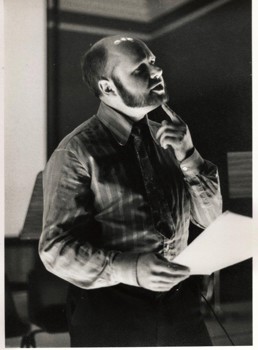
Today, with so much interdisciplinary art, we take it for granted that art can encompass a multitude of techniques, methods and approaches, but 55 years ago it was necessary to spell it out. Such a remit was a radical concept in the art world at the time, but it proved to be far-sighted; CAS, the first practitioner-led organisation of its kind in Britain, was a forum that brought like-minded people together from around the world to discuss the nature of creative computing. They believed in a positive ‘human machine interrelationship’ and understood that art could be used to embody this.
Anyone with an interest anywhere in the world can become a member of the BCS for free today at www.computer-arts-society.com
About the author
 I’m a committee member of the CAS and am pleased to contribute to the history of the art and technology field with my new book Creative Simulations: George Mallen and the Early Computer Arts Society, just published by Springer.
I’m a committee member of the CAS and am pleased to contribute to the history of the art and technology field with my new book Creative Simulations: George Mallen and the Early Computer Arts Society, just published by Springer.
This tells the story of CAS, and BCS' involvement, through the 1960s and 1970s. BCS has very kindly sponsored the inclusion of four images, and the book includes contributions from CAS members Professor Stephen Boyd Davis, Dr Nick Lambert and Professor Jonathan Bowen.
The book is available for purchase from Springer. To receive a 20% discount on the book, sign up for a special CAS evening on 8th July at the BCS Moorgate offices, as part of the EVA Conference (in-person & zoom).












